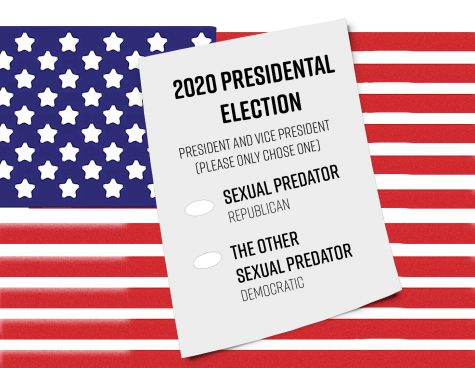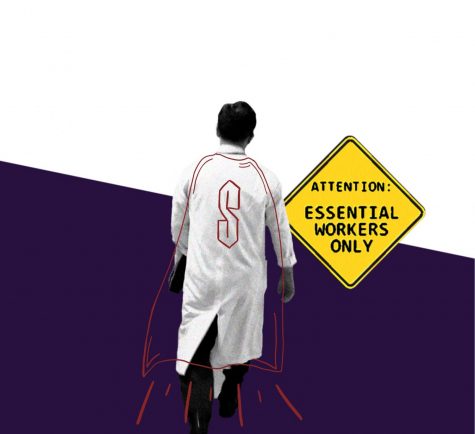Trump’s move to militarize police hurts public safety
From 1997 to 2015, over $5 billion worth of military hardware was transferred to law enforcement agencies around the country under the federal government’s 1033 program. While much of that equipment was mundane, such as cold-weather clothing, flashlights and sandbags, the program also saw the transfer of mine-resistant armored vehicles, grenade launchers, flashbangs, bayonets, sniper rifles, machine guns, silencers, high-caliber ammunition, battering rams, helicopters and other equipment originally intended for war zones.
As a result of these transfers, America’s police departments have become increasingly paramilitary in character; a transformation that has brought with it an unhealthy warrior mentality among some members of law enforcement. Together, these factors have contributed to an overapplication of force in American policing that too often results in dangerous outcomes.
Take for example, the case of Bounkham Phonesavanh, a 19-month-old toddler who had a flashbang explode in his crib when a heavily armed SWAT team executed a no-knock raid in connection with a suspected $50 drug sale in May of 2014. Other excesses include the raiding of a Louisiana nightclub in 2006 as part of a liquor inspection, as well as a series of police raids carried out against barbershops in Florida in 2010 to crack down on “barbering without a license.” These incidents are part of a wider trend that has seen both the number and use of SWAT teams and paramilitary police units skyrocket, with the number of SWAT raids increasing from 3,000 a year in the 1980s to over 50,000 raids in 2014.
St. Louis residents, of course, need look no further than the over militarized response to the Ferguson protests in 2014, which saw the deployment of resources more appropriate to war-torn Syria than to a city in the American heartland, a fact which served to further exacerbate the strained relationship between local police and the community.
The dramatic scenes in places like Ferguson did, however, help raise the public’s awareness of the problems posed by the proliferation of paramilitary police forces, and in 2015 President Obama issued an executive order that added restrictions to the 1033 program. These restrictions, while not sufficient to fully address the problem, at least represented a small step in the right direction. That step was undone, however, when Attorney General Jeff Sessions announced that the Trump administration would be fully restoring the 1033 program to its pre-2015 state.
The decision to resume the transfer of war machines and military excess to police departments is sadly unsurprising for a president who has shown little concern for civil liberties. After all, this is the same president who pardoned Arizona’s infamous Joe Arpaio last month, a man whose civil rights abuses as sheriff of Maricopa County spanned over twenty years and included persistent patterns of excessive force, racial targeting and illegal detentions —abuses that continued in spite of court orders to rectify blatant constitutional violations.
Speaking in Phoenix, President Trump said that Mr. Arpaio was, “convicted for doing his job,” a telling and unnerving statement that reveals the twisted way in which Trump views police work. Simply put, in pardoning Mr. Arpaio and strengthening the 1033 program, Trump has endorsed the police-officers-as-warriors mentality that leads to an overapplication of force and needlessly escalates too many situations, often with tragic consequences.
In his statement, Sessions said that, “We will not put superficial concerns above public safety,” but, as members of his own party have pointed out, that is exactly what Trump’s actions on the 1033 program have done. Writing in an op-ed in the New York Post, Kentucky Senator Rand Paul complained that, “When we couple militarizing law enforcement with the erosion of civil liberties and due process that allows the police to become judge and jury — national security letters, no-knock searches, broad general warrants, pre-conviction asset forfeiture — we see the magnitude of the problem.” South Carolina Republican Mark Sanford struck a similar note, saying, “This makes my blood boil, from both a taxpayer standpoint and a civil liberties standpoint.”
Ultimately, despite the Trump administration’s claims, America’s police departments do not need bayonets, grenade launchers, machine guns or mine-resistant armored vehicles in order to protect and serve their communities. By allocating these military resources to small towns and big cities alike, the federal government has blurred the line between military and police.
As a result, the role of the American police officer is too easily construed as that of a soldier, either as a soldier in a war on drugs, a war on illegal immigration or a war on crime generally. While this view of police work might make for good political rhetoric, the treatment of police officers as soldiers must ultimately mean that we treat our communities as war zones, and that we treat suspects as enemy combatants.
For Trump, promoting such a view of police work might play well with his base and with certain police organizations, but in the end the administration’s decision to resume the militarization of America will only exacerbate the problems of excessive force and civil liberties violations that plague our criminal justice system, making all of us less safe and less free.
Your donation will support the student journalists of Saint Louis University. Your contribution will help us cover our annual website hosting costs.










Dad • Jun 3, 2020 at 9:00 pm
Very well written and researched